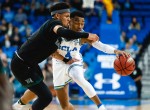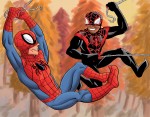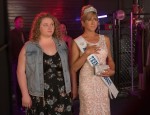Football
Sam Connon, assistant Sports editor
UCLA football had two players named to All-Pac-12 teams this week and another five given honorable mentions. The Bruins also had 13 players recognized for their academic success, with only redshirt freshman defensive lineman Odua Isibor and sophomore defensive back Quentin Lake named to the Pac-12 All-Academic second team.
Redshirt junior tight end Caleb Wilson was the lone Bruin named to the All-Pac-12 first team after amassing a Football Bowl Subdivision tight end-leading 965 yards. Wilson, who is now eligible to enter the 2019 NFL Draft, totaled 1,675 yards, five touchdowns and 114 receptions in his 24 games with UCLA.
Redshirt senior defensive back Adarius Pickett was named to the All-Pac-12 second team in his final season with the Bruins. Pickett had six games with double-digit tackles this year, racking up 123 total tackles – good for fourth in the conference.
Redshirt junior running back Joshua Kelley, junior wide receiver Theo Howard, sophomore defensive back Darnay Holmes, junior kicker JJ Molson and redshirt senior punter Stefan Flintoft were all honorable mentions. Kelley ranked fourth in yards and tied for second in touchdowns among Pac-12 running backs, while Howard led the nation in receptions without a drop with 51. The 2019 schedule was also officially released Tuesday.
UCLA’s home opener will be against San Diego State at the Rose Bowl, where back-to-back College Football Playoff semifinalist Oklahoma will visit one week later.
UCLA has one non-Saturday game, which will come Thursday, Oct. 17 at Stanford after the Bruins’ first bye week.
Washington State and Oregon State are back on UCLA’s schedule after the Bruins did not play either team in 2017 and 2018. The Victory Bell will be up for grabs yet again in the second-to-last game of the year when the Bruins and Trojans face off Nov. 23 at the Los Angeles Memorial Coliseum. UCLA will wrap up its season at home against California on Nov. 30.
Men’s basketball Gabe McCarthy, assistant Sports editor
UCLA men’s basketball sophomore guard Jaylen Hands was named the winner of the UCLA/Muscle Milk Student-Athlete of the Week award for the week of Nov. 26 through Dec. 2. This was Hands’ first time receiving the award this season and in his UCLA career.
This honor marks the second time a member of the men’s basketball team has received UCLA/Muscle Milk Student-Athlete of the Week honors this season.
Hands currently leads the Pac-12 in assists per game and total assists, with 6.3 and 50, respectively. He recorded his first career double-double in an 82-58 victory over Loyola Marymount, logging 17 points and 10 assists. In the Bruins’ previous match against Hawai’i, Hands put up a career-high 11 assists.
This season, Hands is shooting .362 percent from the field, with a .333 3-point shooting percentage. He recorded a season-high points total against Presbyterian, with 19 points.
Hands made 15 starts in 31 games last season as a freshman, averaging 9.9 points and 2.6 assists per game. He totaled 81 assists last season and posted double figures in scoring in 14 games. Hands’ career high for points was a 23-point effort against Detroit Mercy last December.
The other Bruin squad member to claim student-athlete of the week honors this season was freshman center Moses Brown, who has averaged 13 points, five assists and 9.9 rebounds. Brown has posted season highs in points and rebounds with 23 and 17, respectively, against Saint Francis and Purdue Fort Wayne.





